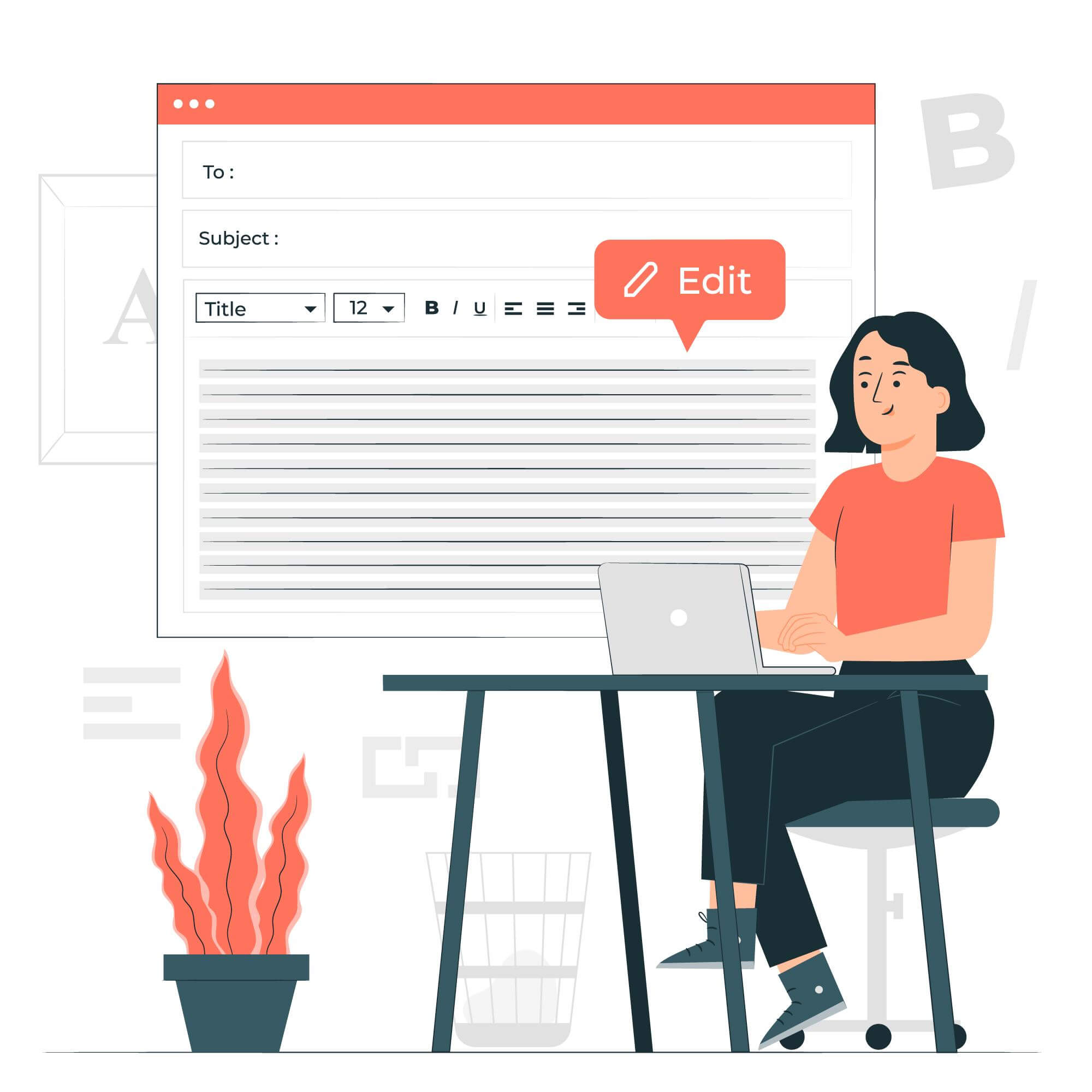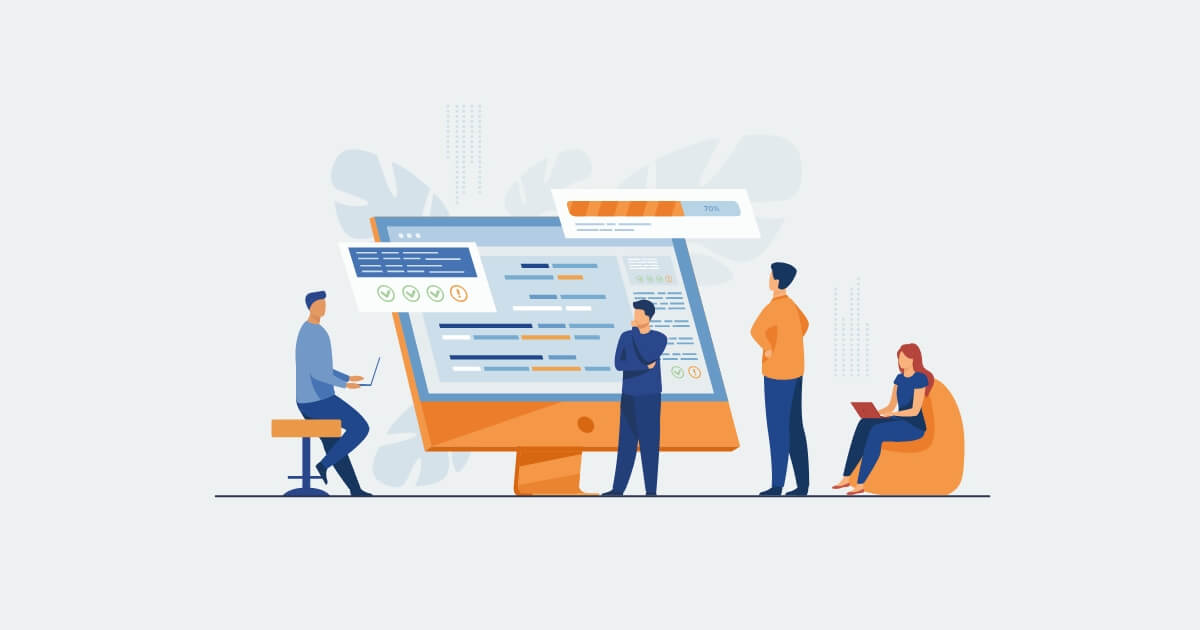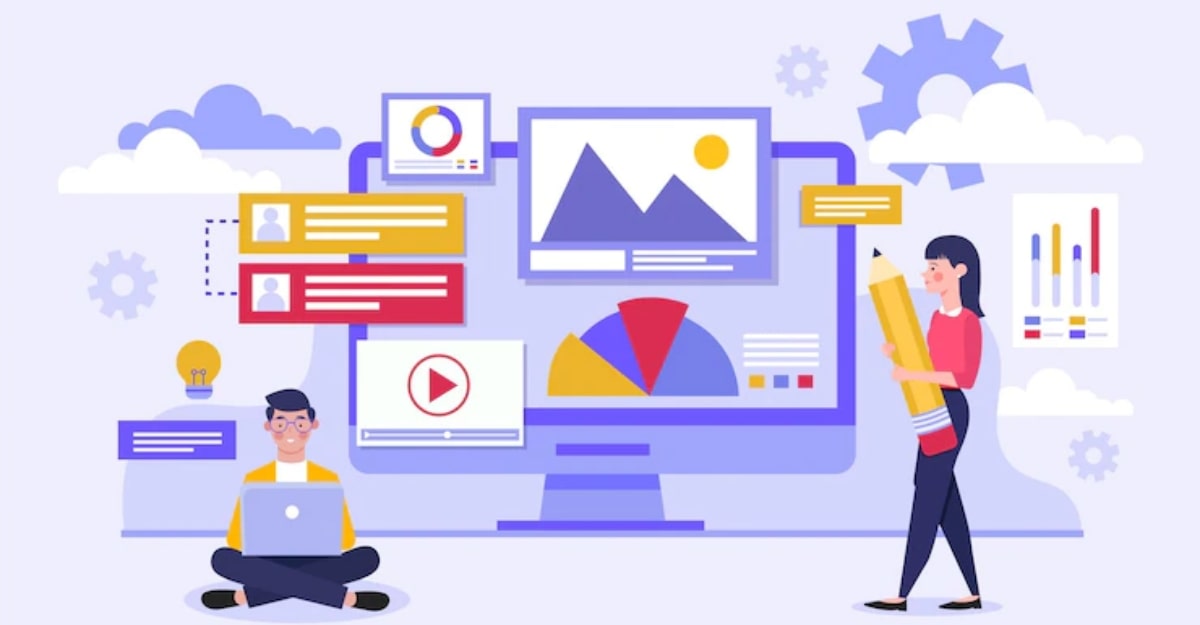
- Software Development
- Technology
- 8 Jan, 2025
- Marcia Barron
Table of Contents
Can you imagine your life without softwares?
It wouldn’t be an overstatement if we said that the modern human is more dependent on software than anything else today. The software industry not only employs millions of people worldwide; it also provides solutions to every other industry on the planet. Whether it is oil exploration or manufacturing or tourism or finance, softwares have made lives more comfortable, processes more efficient and businesses more productive.
The thing is that today for every business function like production, marketing, customer relationship management or accounting, you have multiple softwares. People are spoilt for choices when it comes to softwares. As so many people are vying for a place in your desktop/laptop system, you will need to pay attention to the software quality. It is because you do not want a low-quality software system running the show when it comes to business. A low-quality software system can seriously affect your revenues.
What is Software Quality?
Before we move further let us clear the air on the fundamental question, so what is software quality.
The most simplistic parameter of software quality would be that if the software functions as intended, then we can say that it is of high quality. If parameters of software match with the wants of the user, the software is considered to be of high quality.
What are the factors that affect software quality?
The following factors have an overbearing effect on software quality.
Good UI/UX
Well, designed software will attract the users and make it easy for them to navigate through it. The elegant design will make the software a charm to use for the users, and they will derive more benefit out of software which they like to use as opposed to one they don’t.
Reliability
The software should be reliable, meaning that it should function without any hiccups. The software which hangs is not able to return the desired data or breaks down frequently is of no use.
Versatility
Versatility means that the software should be able to perform on all platforms and devices. Versatile software will help your team in this digitally connected world. If the software performs well on desktops and is unable to perform well on tablets, then it can create problems for people who are on the move.
Easy to maintain
With time and (updates!), bugs start appearing in every software. A high-quality software should be easy to maintain, meaning that the bugs should be solved quickly as and when they appear.
Why does good software quality matter?
Remember the year 2000? Apart from the fact that it was the year when the millennium changed, 2000 was also the year when the virus Y2K raised its ugly head. The bug terrorized the world and exposed vulnerabilities in softwares all over the world.
Does the name Arianne 5 ring some bells? Well if you are a space enthusiast, then it would certainly do. It is the rocket that was developed by the European space agency, a rocket whose life was short-lived 1 minute to be exact. Due to an internal error in the software, Arianne 5 exploded mid-air just 60 seconds later it took flight blowing up ten years worth of hard work with it.
What a small bug in the software can do!
These examples depict the importance of having high-quality software. Because software is the brain that runs an organization and you do not want a faulty brain running yours, do you?
The thing with quality in software is that the cost of low-quality software is not accounted for and budget cuts in software seldom have unfavourable consequences in the long-term.
Bad quality software can ruin your reputation in the market, expose your systems to hackers, resulting in lost business due to complaints and returns, and could even lead to lawsuits.
As consumers, you might have faced the ill effects of low quality in software, like in banking transactions, ticket purchases and so on. Due to bad software, the response times are pretty long leading to an unprecedented loss of time and money.
Software Quality Standards you need to know.
The quality standards that your software vendor follows should be one of the core criteria for selecting your software development company.
Mentioned below are some major quality standards.
There are five standards within the ISO/IEC 29119 international software testing standard:

- ISO/IEC 29119-1: This is a standard that deals with the concepts and definitions of software.
- ISO/IEC 29119-2: This standard deals with the processes of testing in software.
- ISO/IEC 29119-3: This is a standard that deals with test documentation.
- ISO/IEC 29119-4: This Standard deals with the techniques and strategies used in software testing
- ISO/IEC 29119-5: This standard deals with keyword-based software testing
ISO/IEC 9126
This ISO standard deals with the following key aspects to determine the quality of a software application −
- Defining External metrics and internal metrics
- Quality standards used in metrics
ISO/IEC 25000:2005:
It is a standard that replaces the old ISO-9126 and ISO-14598 standards and helps in setting the guidelines for software quality requirements and evaluation(SQuaRE).
SQuaRE is further divided into sub-parts like
- ISO 2500n − This is the Quality Management Division
- ISO 2501n − This one pertains with the Quality Model Division
- ISO 2502n − The Quality Measurement Division
- ISO 2503n − This standard details the Quality Requirements
- ISO 2504n − This one is concerned with the Quality Evaluation of software
The following are the main contents of SQuaRE.
- It covers the Terms and definitions used for the product.
- It clarifies the Reference Models used for development.
- It acts as a general guide for the users.
- It covers all standards related to Requirement Engineering (i.e. specification, planning, measurement, and evaluation process)
ISO/IEC 12119
It is a standard that is related to software packages. It details the instructions on how one should test a software package. The following are the main things that the standard covers.
- Establishing the requirements for software packages.
- It guides the testers by providing detailed instructions for testing a delivered software package against the specified requirements.
IEEE- Standard for Software Test
IEEE(Institute of Electrical and Electronics Engineers) has defined a set of standards for testing any software.
- IEEE 829: This IEEE Standard defines the format of preparing the software testing documentation.
- IEEE 1061: This is a standard that defines the process to be followed for identifying and validating various software quality metrics.
- IEEE 1059: This standard pertains to software verification and validation.
The final test
Quality plays a significant role in software development. In simple terms, quality ensures that the software works as nobody will buy software that does not work. The software developers should ensure that quality is maintained in every step of software development.
By using the practices and methods and by following the laid down standards stringently, you will be able to ensure that the end product is of top quality. The quality standards will also aid your software developers in improving their level of productivity.
Hire top custom software development companies to ensure that your software is built, keeping in mind the highest quality standards. Our analysts on various quality parameters vet these companies, and we can assure you that if you choose to work with a company from this list, then you will be proud of your decision in the future.
Social Join To Us
Write for us
Table of Contents
Throughout the early 1990s, the Internet’s frontiers continuously continued increasing at an exponential rate. In addition, the use of digitalization has been fast rising. Digitization is converting conventional information to digitized material utilizing an analog-to-digital converter (ADC) such as an image scanner or electronic audio recorder.
Earning and accepting transactions as a corporation or business has seldom proven quicker owing to technological advancements.
There is no disputing that we are encircled with innovative products in this era of hi-tech gadgets. This is the age of Generation Z. Kids are often fascinated by high-tech products that improve existence simpler. As a result, the anticipation of a digital or actual adventure grows exceedingly specific.
To provide an exciting adventure, escape rooms in Flagstaff, for instance, must combine top-notch attributes. As a result, the escape room Flagstaff businesses around us have effectively created the ideal ambiance. All of this became only achievable because of technical developments.

Organizations are hardly frequently intruding on clients’ windows and demanding payment for past-due payments. Instead, businesses use billing software. This allows enterprises to convert quotations into payments quickly and notify their clients when a transaction is necessary – easy. This is fantastic since it guarantees accounting is no longer a time-consuming or unpleasant task.
The technologies to which we are now acclimated have prepared the road for us to develop further. This collection of present and forthcoming advancements can revolutionize our existence considerably more.
Digitalization, on the alternative hand, utilizes numerous technological innovations to alter a company model, establish alternative income streams, and investigate new methods to produce corporate value. Beyond digitization, transformation transforms a traditional firm into a global organizational environment.
It entails employing informational innovation (IT) to revolutionize companies’ organization in the contemporary world by reviewing, re-engineering, and rethinking it. Digitalization likewise assists businesses in collecting data, analyzing trends, and making smarter commercial decisions.
However, technological transition (DX) encompasses more than automation and modernization of pre-existing processes. DX refers to an enterprise’s use of electronic information to achieve shared goals such as increased efficiency, value, or innovation. It explores whether the current contemporary technology may be used to alter goods, processes, and businesses. DX is, in essence, a company change fuelled by digitization.
1. Intelligent robots
More chores. It’s tedious, but it’s unavoidable. However, suppose machines might assist you in avoiding your misery? Robotic vacuuming cleaners and intelligent household products are presently on the market. More significant, better-productive engines are also emerging.
Humans may undoubtedly live in a time when valuable machines serve as butlers, chefs, or simply dogsbodies throughout the house.
2. Cryptocurrency innovation
Organizations have typically relied on centralized servers for digital bookkeeping. Distributed ledger technology (DLT), often known as cryptocurrency technology, is a transparent computational database network many users share. The transparent ledger platform generates a tamperproof document (a block) of each user’s transaction, and every transaction is time-stamped and linked to the preceding block.
This sequence of blocks, or blockchain, may permanently be altered by the agreement of the system’s users. Furthermore, every transaction in the database has a distinctive cryptography signature that aids in the tracking of that block and others on the chain. As a result, the logged data cannot be changed or destroyed, making the blockchain an ideal bookkeeping and reporting solution.
The cryptocurrency platform keeps a visible, genuine, and traceable history of each transaction between system users. As a result, the technology is ideally equipped to distribute privacy regulations and control identification availability in a business.

3. The Multiverse
The notion of the metaverse is relatively new, at least in the technological realm. Nonetheless, it captured the public imagination when Facebook CEO Mark Zuckerberg relaunched his parent firm as Meta on October 28, 2021. The renaming move indicates Zuckerberg’s dedication to and financial investment in the metaverse idea.
All of the recent technological breakthroughs point to someone more excellent developing in the opposing part of the globe. We are seeing the birth of a unique artificial universe known as the metaverse. It enhances existing digital apps and platforms that provide a comprehensive but real-world user experience.
4. Information Technology Provides Unlimited Market Potential
The digital workplace ushers in a new corporate world brimming with limitless prospects. It enables a company to efficiently market its services and offerings to a broader public. Using technological advancements such as the virtual world, cryptocurrencies, and Neurofibrillary, a firm may break out from a double e-commerce realm and traverse virtual yet four real-life-like worlds for continued commercial development.
DX communications requirements are documented business-to-business (B2B) correspondence in the digital world, allowing significant corporations to conduct transparent discussions, documentation, merchandise evaluations, and deal-making. Furthermore, they may persuade clients through highly engaging and genuine marketing techniques.
5. AI (Artificial Intelligence)
AI remains a frightening idea for the typical individual.
AI benefits organizations because it eliminates the need for individuals to conduct tedious and time-consuming jobs. This includes anything from email marketing (which may now be generated instantly) to internet phone support via avatars.
However, since technology has enhanced the provision of content and training possibilities, we are increasingly witnessing the teacher’s role shift to a digital learning role in many courses, as participants take increasing responsibility for their knowledge and use digital to gain relevant understanding.
Schools and institutions worldwide are redesigning classroom environments to support this new form of teaching, encourage more excellent contact and little unit work, and leverage technology.
CONCLUSION
The Internet is a fantastic tool that may aid and enhance schooling in many ways, from allowing professors to develop instruction content more quickly and creating new opportunities for people to study and communicate.
It is considering the Internet’s worldwide availability and the proliferation of digital devices that can connect with it, a new period everywhere, whenever education is on the horizon.
It must be up to didactic developers and academic innovations to capitalize on the potential of digital to transform learning so that successful and affordable training is provided to everyone everywhere.
Table of Contents
In today’s brutally competitive market, creating software or an application that satisfies specific business criteria is essential for survival.
The custom software development services include creating, planning, constructing, and deploying software expressly for a single person, a select group of employees at a company, or a third-party contract known as custom software development.
What is Custom Software development?
Let’s say you or your company wants software that can satisfy its present or future needs. The entire procedure is called custom software development, after which you must proceed with specific additions or other software customizations.
The process by which a particular piece of software is envisioned, developed, released, and maintained to carry out a specific operational task is what we refer to as the custom software development process.
Steps for Custom Development to Ensure the Best Outcome
There is no one rule for any process. Especially when you are creating custom software, you will need to alter this process according to your needs. So, work accordingly, but before you plan, ensure you completely understand the business needs.
Even if you hire someone for custom software development services, you will still need to be clear about your project.
1. Identify Your Business Challenges
We all know that each organization has specific needs and demands for its working procedures. A single piece of software cannot meet the needs of any business.
As a result, each business-related problem needs a unique or specialized solution. Choose which company issues aggravate you the most before you begin to develop your own unique software program.
2. Gather All the Details & Conceptualize the Plan
Establish your high-level objectives before beginning the software’s detailed design. This might, for instance, involve simplifying existing procedures, automating laborious manual operations, or raising productivity.
Determine quantifiable indicators you may use to gauge the project’s progress concerning your top-level objectives after you’ve defined them.
It will help if you put all your ideas on the table while creating custom software. By the end of this step, concentrate on a specific plan that has been filtered via multiple sub-stages.
3. Analyze the System
System analysis is to analyze the idea of software development from the viewpoint of a business executive trying to stay away from a bad investment.
Essentially, you may use this feasibility analysis to determine the viability of your project. You need to develop other parts of the idea along with new arguments.
The majority of this phase consists of outlining the later design and development stages.
4. Watch out for the Scope
The management of a software development strategy should be mindful of scope creep because it might cause delays.
It alludes to possible changes that could occur during the course of the project if the plan was poorly written. This can occur from the beginning of the plan until the end of the development cycle.
You must concentrate on the primary objectives of the initiatives with this. Build only what the project allows.
5. Make a Realistic Plan with Set Milestones
To lead and guide the overall endeavor:
- Form a team including your engineers, subject-matter experts, and a project manager.
- Make a project road map with your coworkers.
- Make sure it’s doable; a sophisticated workflow and shipping system are impossible to develop in a week.
To keep the project on track, create milestone plans.
6. Create the Prototype or MVP
This is most significant for custom software development.
You can make your preliminary research real and determine whether your ideas are practical via a prototype or minimum viable product (MVP).
Both alternatives are for testing so that you can change your project quickly and efficiently while using fewer resources.
7. Development and Implementation
Executing the plan should be simpler and quicker once elements such as system requirements, architecture, and the wireframe are in place.
An agile development methodology that includes brief iterative sessions where each development team member communicates hiccups and concerns discovered during the process is strongly advised.
This method increases productivity and promotes the efficiency of workflows.
8. Usability Testing
The last check before developing a software application is usability testing. It entails showing your product design to a group of end consumers so they may evaluate its usability, precision, and efficacy.
By conducting it this way, you may examine your product’s use by actual customers more closely. This saves a tonne of time and work because you can rebuild any features in light of new information and only start coding after everything is perfect.
9. Keep Future Improvement in Mind
You’ve created your product and released it. There will always be room for development; therefore, it won’t be ideal.
The iterative software development approach assumes you’ll need to start with the list of prioritized items or, occasionally, even the strategy for new features.
Remember that you should consider the suggestions made by customers.
Top Mistakes to Avoid in Building a Custom Software
Learn how to use custom software development to avoid common pitfalls so that you may become an innovation leader who leads your business to long-term success.
- Adding up unnecessary complexity by creating wrong features.
- Not keeping the clients or other stakeholders in line for constant feedback.
- Deciding on all decisions without proper planning or brainstorming.
- Not leveraging off-the-shelf software solutions.
- Trying to take full control of project scope without including team.
- Denying to provide clear acceptance criteria for features.
- Concentrating too much on individual features.
Wrap up
No doubt that custom software development has several benefits. With the companies constantly evolving, they need scalable software from the start. Custom software has become essential for most firms due to the rising specialization of enterprises and the complexity of internal systems.
Always make a great plan for custom software development services. To avoid the risks, keep your questions ready for the client. If you are a client, don’t forget to ask your questions for better clarity about the process.
Table of Contents
Website design is one of the most important parts of a website, and there are a lot of great websites that go through countless hours of hard work to do it right. If you’re looking for website design tips or tricks to help your conversions, take a look at this blog article.
Why Web Design Tricks Work
Web design tricks can be a powerful way to increase your conversions. When used correctly, these tricks can help you create a more user-friendly website.
One of the most important factors in web design is user experience. Incrementors provide Custom website Design services for your company. Just tell them your thoughts and their experts will turn them into reality. That means making sure the visitor feels comfortable and confident while on your website. One way to do this is by making sure the site is easy to navigate.
Some of the best ways to make your site easy to navigate are by using simple design elements and arranging content in an intuitive way. For example, you can use color and typography to help visitors understand how to use your site. Additionally, you can use pagination and featured images to highlight key sections of your website.
In addition to making your site easy to use, you also need to make sure it’s visually appealing. This means creating a design that is both modern and timeless. You can achieve this by using high-quality images and fonts, as well as unique layouts and designs.
Finally, make sure you optimize your website for search engine optimization (SEO). This will help you increase traffic from top search engines like Google, Yahoo! and Bing.
How to Use a Website Design Trick
One of the most common mistakes website owners make is not using design tricks to improve their conversions. Here are some surprising web design tricks that will help you boost your conversions and create a more effective website.
One of the best ways to improve your website’s conversion rate is to use design tricks. This can include using color and layout to improve your site’s usability and engagement. For example, you can use color to help users quickly find what they’re looking for. You can also use different layouts to make it easier for them to navigate your site.
Another great way to boost your website’s conversion rate is to provide useful content. This content should be relevant to your target audience and interesting enough to keep them engaged. You can also offer free resources or bonuses that users can access after completing a conversion action. This will help you build trust and positive customer reviews.
What are the 5 Types of Web Design Tricks?
There are many different types of design tricks that you can use to increase your website’s conversion rate. In this blog post, we will discuss the five types of web design tricks that you can use to increase your website’s conversion rate.
1. Use catchy and eye-catching titles. Title tags are one of the most important elements on a website, and they can have a huge impact on your website’s conversion rate. Try to create catchy titles that will catch people’s attention, and make sure that your titles are relevant to your website’s topic.
2. Make your site easy to navigate. People want to find what they are looking for on your website as quickly as possible. Incrementors professional Website development Services provides a better first impression.. Amateur websites can come across as unprofessional and less credible. Make sure that your site is easy to navigate, and try to include clear navigation menus and labels.
3. Create compelling content. It is vital that your website features high-quality content if you want to achieve a high conversion rate. Make sure that your content is well-written, informative, and engaging, and make use of multimedia elements such as videos and images.
4. Use effective call-to-action buttons. If you want people to take action on your website, make sure that you include buttons that are visually attractive and easy to understand.
5. Optimize your content for search engines. Make sure that you optimize your website so that it is optimized for search engines like Google, Bing and Yahoo. There are several different ways to do this, such as including keywords in your title tags and meta descriptions
How to Implement a Web Design Trick.
One of the best ways to improve your web design conversions is to use some surprising web design tricks. Using these tricks will help you to capture more leads and convert more visitors into customers.
One of the most common web design tricks is to use eye-catching fonts and colors. This can help to make your website more attractive and hopefully draw in more visitors. You can also use effective layout techniques, such as using dividers and headers, to improve the look and feel of your website.
Another effective web design trick is to create a custom header for your website. This will give your website a unique look and help to set it apart from other websites. Finally, make sure that all of your content is well written and easy to understand. This will help you to capture more leads and convert more visitors into customers.
Conclusion
If you’re looking to improve your web design conversions, then you need to start incorporating some of these surprising web design tricks into your work. By doing so, you’ll be able to increase your website’s traffic and see an increase in conversion rates as a result. So what are you waiting for? Start using these tips today and see the results for yourself!











